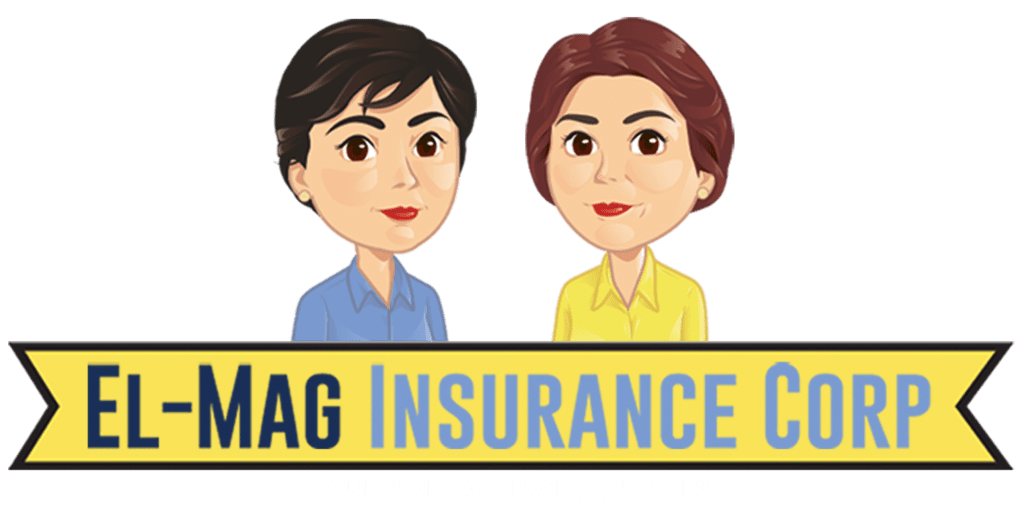As a doctor, your health checklist is as critical as your stethoscope. From routine check-ups to life-saving interventions, your daily tasks are varied and vital. In this guide, we outline key tasks for every doctor. This helps you provide excellent care at every step. This list helps you navigate modern healthcare challenges. Use it to track a patient’s progress, check test results, or make important decisions. Stay organized and efficient, and focus on what truly matters – your patients’ well-being. Get ready to improve your workflow, prioritize tasks, and raise your care standards with this essential resource. Let’s dive in and elevate your practice to new heights of excellence.
Importance of following a health checklist in a medical practice
In the fast-paced world of medicine, a structured to-do list is crucial. For healthcare professionals, a daily agenda acts like a roadmap, guiding them through their tasks. This is important for personal efficiency and patient safety. When doctors track their tasks, they can prioritize better and complete critical actions on time. Patient care is complex, so a systematic approach is essential. A to-do list is an invaluable tool for achieving that.
A detailed health checklist lowers the risk of errors in medical settings. It outlines tasks like patient follow-ups, medication reviews, and necessary consultations. This ensures that nothing is overlooked. In this field, minor mistakes can have serious health consequences for patients. Using a to-do list helps doctors stay organized and promotes a culture of accountability in their practice.
Additionally, such lists foster better time management. A clear overview of daily activities helps doctors manage their time better. They can balance patient care, admin tasks, and professional growth. This reduces stress, making doctors feel more in control. By following a to-do list, they create a more productive work environment. This boosts their ability to provide excellent patient care.
Regular check-ups: Ensuring preventive healthcare
Regular check-ups are essential for preventive healthcare. They are a key part of a doctor’s responsibilities. These visits help doctors track their patients’ health over time. They can spot potential issues before they turn serious. Regular assessments can lead to early detection of diseases like hypertension, diabetes, and cancer. This early detection can greatly improve treatment outcomes. For doctors, scheduling and conducting these check-ups is more than routine; it’s a vital duty that can save lives.
During these check-ups, doctors can conduct thorough health evaluations. These include physical exams, medical history reviews, and lifestyle assessments. This approach helps healthcare providers customize their advice for each patient. Also, these visits let doctors teach patients about preventive measures, like vaccinations and lifestyle changes. Empowering patients to take an active role in their health.
Furthermore, regular check-ups help in building strong doctor-patient relationships. When patients feel valued during visits, they’re more likely to follow medical advice. This trust helps doctors manage chronic conditions better. It also motivates patients to maintain healthy lifestyles. So, adding regular check-ups to the to-do list is key for preventive healthcare. It enhances the overall patient experience.
Diagnostic tests and screenings: The backbone of medical care
Diagnostic tests and screenings are key parts of medical care. They are essential items on a doctor’s checklist for health. These procedures give important information for the accurate diagnosis of health conditions. From blood tests to imaging studies, the data helps guide treatment decisions. It also aids in creating effective management plans. So, ensuring timely screenings and follow-up tests is a vital duty for healthcare providers.
Diagnostic tests do more than confirm diagnoses; they are also preventive tools. Get regular screenings for high cholesterol, cervical cancer, and colorectal cancer. They help find problems early. This can greatly improve patient outcomes. When doctors use these tests, they can help their patients’ health. This helps reduce the burden of disease on individuals and the healthcare system.
Effective coordination of diagnostic tests is key to continuous care. Doctors must stay organized to review test results quickly and share them with patients on time. They also need to follow up about results and any next steps. By prioritizing tests and screenings, doctors can improve the diagnostic process, boost patient engagement, and help achieve better health outcomes. Prescription management: ensuring patient compliance.
Prescription management is key to patient care and should be on every doctor’s checklist for health. It’s crucial that patients understand their medications, dosages, and possible side effects. This knowledge boosts adherence and leads to better treatment outcomes. A clear approach to prescribing reduces errors and helps patients manage their health. By prioritizing prescription management, doctors can boost their patients’ well-being.
Patient education is key to improving compliance. When doctors explain why a medication is prescribed, patients see its value. Also, discussing side effects and drug interactions eases concerns and prompts questions. This open communication builds a partnership that is vital for effective healthcare.
Moreover, prescription management also involves regular reviews of patients’ medication regimens. Doctors should continuously assess whether the prescribed medications remain appropriate, effective, and safe. This involves checking for drug interactions. It also means adjusting dosages if needed. Lastly, it helps ensure patients avoid unnecessary medications. Doctors can improve patient adherence by managing prescriptions well. This leads to safer and more effective healthcare.
Prescription management: Ensuring patient compliance
Prescription management is a critical aspect of patient care that deserves a prominent place on every doctor’s checklist for health. Ensuring that patients understand their medications, dosages, and potential side effects is vital for promoting adherence and achieving optimal treatment outcomes. A well-structured approach to prescribing not only helps in minimizing errors but also empowers patients to take charge of their health. By focusing on prescription management, doctors can make a significant impact on their patients’ overall well-being.
Incorporating patient education into the prescription process is essential for enhancing compliance. When doctors take the time to explain the rationale behind a prescribed medication, patients are more likely to understand its importance. Additionally, discussing potential side effects and drug interactions can help alleviate concerns and encourage patients to voice any questions they may have. This two-way communication fosters a collaborative relationship that is crucial for effective healthcare delivery.
Moreover, prescription management also involves regular reviews of patients’ medication regimens. Doctors should continuously assess whether the prescribed medications remain appropriate, effective, and safe. This includes monitoring for possible drug interactions, adjusting dosages as needed, and ensuring that patients are not prescribed unnecessary medications. By maintaining a diligent approach to prescription management, doctors can not only enhance patient adherence but also promote safer and more effective healthcare practices.
Emergency preparedness: Handling critical care situations
Emergency preparedness is crucial for every doctor. A clear to-do list is essential. It should include strategies for managing critical care situations. Medical emergencies can happen suddenly. Being ready to respond can greatly improve patient outcomes. A proactive approach means regular training and drills. It also involves creating protocols to guide healthcare professionals during crises.
Doctors need to know the common emergencies in their specialties.
They should master skills such as:
-
Advanced cardiac life support
-
Trauma management
-
Life-saving medications
It’s key to know the latest guidelines and best practices for emergency care. Focusing on ongoing training and simulation exercises helps doctors build confidence and skills for critical situations.
Additionally, effective communication and teamwork are essential in emergency care. Doctors should build strong ties with colleagues like nurses, paramedics, and specialists. This helps ensure smooth teamwork during crises. A well-organized response team can boost the efficiency of emergency interventions. This leads to better patient outcomes. By adding emergency preparedness to their health checklists, doctors can reduce risks. This enhances their ability to give life-saving care when it counts.
Referrals and consultations: Collaborating with specialists
Referrals and consultations are key parts of patient care. They should be on every doctor’s health checklist. Many medical issues need specialists for the best treatment. By making timely referrals, doctors help patients get top-quality care. This teamwork boosts patient satisfaction and improves understanding of their health needs.
When doctors think about referrals, they should assess their patients’ specific needs. Then, they can find specialists who best meet those needs. This means talking with colleagues from various fields. It also involves reviewing patient histories and discussing treatment options. Good communication with specialists is key. It ensures patients get coordinated care, which leads to better management of complex health issues.
Furthermore, following up on referrals and consultations is equally important. Doctors should actively obtain and review feedback from specialists regarding their patients’ care. This ensures that specialists’ recommendations are part of the patients’ treatment plan. Keeping this continuity of care can greatly impact patient outcomes and satisfaction. Focusing on referrals and consultations helps doctors work better together. This way, patients receive thorough and effective healthcare.
Medical record keeping: Ensuring accuracy and confidentiality
Accurate and confidential medical record keeping is vital for any medical practice. It is a key task on a doctor’s health checklist. These records are key to patient care. They provide a full history that helps guide treatment choices. Keeping precise records ensures healthcare providers can access crucial information. This includes medical histories, medication lists, and test results. They help provide the right care on time.
Moreover, confidentiality is paramount in medical record keeping. Patients rely on healthcare providers to protect their personal information. A breach of this trust can lead to serious consequences. It’s crucial to have strict data management protocols. This includes secure storage and limited access to information. Regular training on privacy rules and best practices is also important. It helps ensure that all staff know their role in safeguarding sensitive data.
Additionally, effective medical record keeping contributes to improved care coordination among healthcare teams. Keeping records accurate and easy to access makes communication between providers smoother. This is key in complex cases with several specialists. When doctors prioritize accurate and confidential record keeping, they improve patient care. It also protects privacy. This builds trust and responsibility in their practices.
Continuing medical education: Staying updated with the latest advancements
Continuing medical education (CME) is vital for a physician’s growth. It ranks high on their to-do list. The healthcare field changes often. New research, treatment methods, and technologies appear regularly. To offer the best care, doctors must keep up with these updates. Ongoing education helps them stay skilled and deliver evidence-based care to patients.
CME can take many forms. It includes attending conferences, joining workshops, and finishing online courses. These options help doctors learn from experts. They can also share knowledge with peers and explore new ways to care for patients. Doctors can improve their skills by seeking educational opportunities. This helps them stay updated on the latest in medicine. This effort leads to better patient outcomes.
Moreover, many medical boards and licensing organizations require CME credits for licensure renewal. Doctors prioritize continuing education in their to-do lists. They fulfill requirements and show their commitment to lifelong learning. This dedication helps individual practitioners and advances the medical field as a whole. By fostering a culture of continuous learning, doctors stay ready to meet modern healthcare challenges.
Patient communication and care coordination: Building strong doctor-patient relationships
Good patient communication and care coordination are key to quality healthcare. They are essential tasks for doctors. Open communication with patients builds trust. It also encourages them to take an active role in their care. This two-way dialogue helps doctors understand patients’ concerns, preferences, and values. As a result, they can create more personalized treatment plans.
Effective communication goes beyond just talking to patients. It includes the whole healthcare team. Care coordination among different providers is key for giving patients complete treatment. This means sharing important information, discussing treatment plans, and tackling any care barriers. When doctors communicate well and work together, they can boost patient experience and health results.
Additionally, strong doctor-patient relationships are built on empathy and compassion. Listening to patients and validating their feelings creates a supportive environment. This helps them follow treatment plans. Doctors can build stronger relationships by improving patient communication and care coordination. This helps boost compliance, satisfaction, and overall health.
Conclusion: The impact of a well-structured to-do list on patient care
A well-structured health checklist is crucial for every doctor. It greatly impacts patient care and practice efficiency. By organizing daily tasks like check-ups, tests, and prescriptions, healthcare professionals can handle their responsibilities more easily. This method boosts productivity and ensures patients get timely, appropriate care.
Also, focusing on collaboration through referrals, consultations, and clear communication helps the healthcare team. This approach supports a complete method for managing patients. By keeping accurate medical records and pursuing ongoing education, doctors can ensure high care standards and protect patient confidentiality.
A complete health checklist helps doctors focus on what matters—the well-being of their patients. By using this structured method, healthcare providers can improve their practice. They can adjust to the evolving field of medicine. This helps them give excellent care that benefits their patients.




3 thoughts on “The Essential Health Checklist for Every Doctor: From Check-Ups to Critical Care”
Thanks for sharing. I read many of your blog posts, cool, your blog is very good. https://www.binance.info/en/register?ref=JHQQKNKN
Your article helped me a lot, is there any more related content? Thanks!
Thank you for your sharing. I am worried that I lack creative ideas. It is your article that makes me full of hope. Thank you. But, I have a question, can you help me?